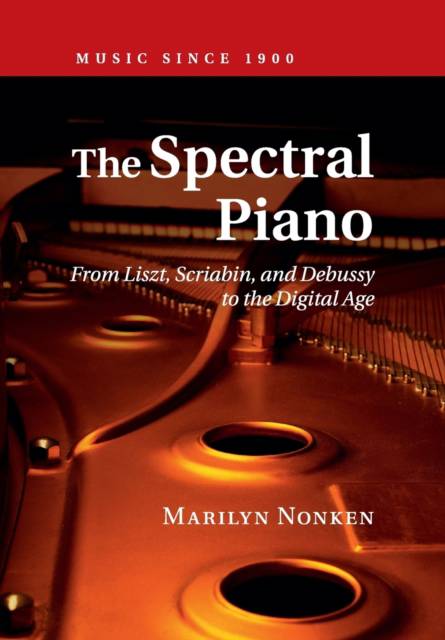
- Afhalen na 1 uur in een winkel met voorraad
- Gratis thuislevering in België vanaf € 30
- Ruim aanbod met 7 miljoen producten
- Afhalen na 1 uur in een winkel met voorraad
- Gratis thuislevering in België vanaf € 30
- Ruim aanbod met 7 miljoen producten
Zoeken
€ 60,95
+ 121 punten
Uitvoering
Omschrijving
The most influential compositional movement of the past fifty years, spectralism was informed by digital technology but also extended the aesthetics of pianist-composers such as Franz Liszt, Alexander Scriabin, and Claude Debussy. Students of Olivier Messiaen such as Tristan Murail and Gérard Grisey sought to create a cooperative committed to exploring the evolution of timbre in time as a basis for the musical experience. In The Spectral Piano, Marilyn Nonken shows how the spectral attitude was influenced by developments in technology but extended the aesthetic concerns of Liszt, Scriabin, and Debussy. Nonken explores shared fascinations with the musical experience, which united spectralists with their Romantic and early Modern predecessors. Examining Murail's Territioires de l'oubli, Jonathan Harvey's Tombeau de Messiaen, Joshua Fineberg's Veils, and Edmund Campion's A Complete Wealth of Time, she reveals how spectral concerns relate not only to the past but also to contemporary developments in philosophical aesthetics.
Specificaties
Betrokkenen
- Auteur(s):
- Uitgeverij:
Inhoud
- Aantal bladzijden:
- 210
- Taal:
- Engels
- Reeks:
Eigenschappen
- Productcode (EAN):
- 9781316616413
- Verschijningsdatum:
- 25/08/2016
- Uitvoering:
- Paperback
- Formaat:
- Trade paperback (VS)
- Afmetingen:
- 170 mm x 244 mm
- Gewicht:
- 340 g

Alleen bij Standaard Boekhandel
+ 121 punten op je klantenkaart van Standaard Boekhandel
Beoordelingen
We publiceren alleen reviews die voldoen aan de voorwaarden voor reviews. Bekijk onze voorwaarden voor reviews.











